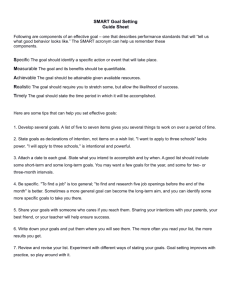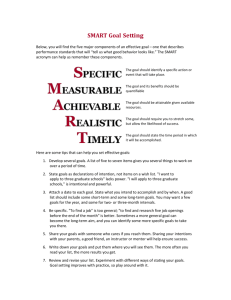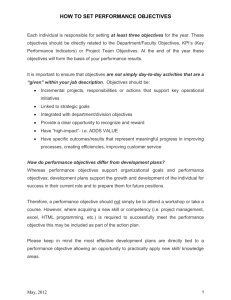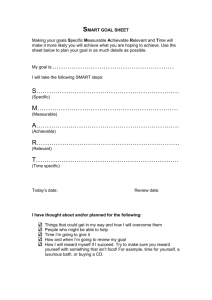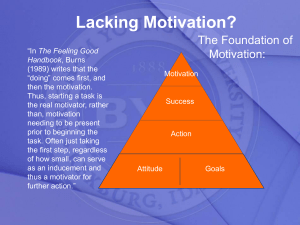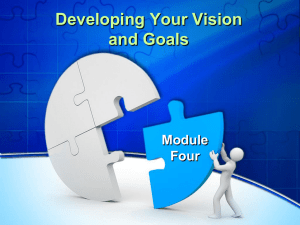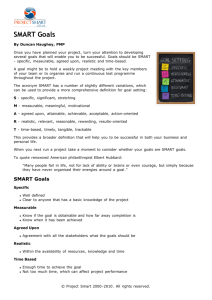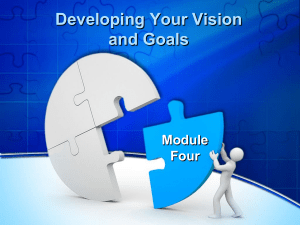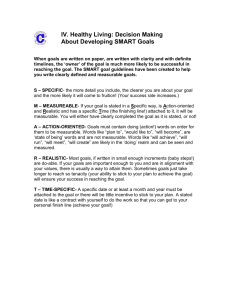goal setting - MDC Faculty Home Pages
advertisement
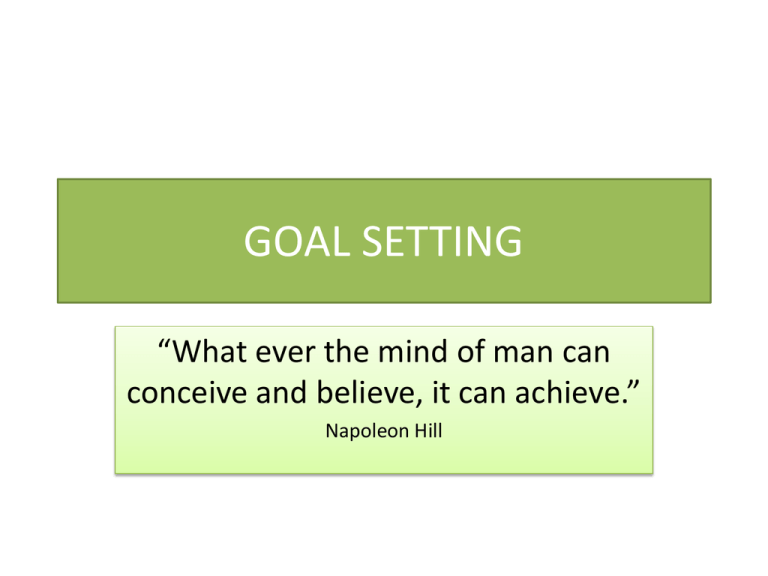
GOAL SETTING “What ever the mind of man can conceive and believe, it can achieve.” Napoleon Hill What is the difference between a dream and a goal? ACTION In order for something to be a goal: • It has to be important to you, personally. • It has to be within your power to make it happen through your own actions ,regardless of the behavior of others • It has to be something you have a reasonable chance of achieving. • It must be clearly defined in positive terms and have a specific plan of action HOW TO SET GOALS • 1. Define the goal . Visualize it. • 2. Outline the steps needed to achieve it. • 3. Consider possible blocks and ways of dealing with them. • 4. Set deadlines. SMART goal setting. • S=Specific : There is a higher likelihood that a specific clearly stated goal would be accomplished than a general goal. • A vague goal can set you up for procrastination since you may not be sure exactly how to approach the goal. To help create a specific goal ask yourself the following questions. • Who is involved? What do I want to accomplish? Where is the central locale? When is my deadline? Which requirements or constraints should I consider? Why do I want to accomplish this goal? SMART goal setting • M = Measurable: Goals need to be measurable so that there are benchmarks of attainment. When your goals are measurable or quantifiable you are more likely to stay on track and reach certain milestones which give you that boost of confidence to press on. SMART goal setting • A = Attainable: Keep your goals within your control. If you set goals that you do not have reasonable control over, you may be setting yourself up for failure. Having attainable goals is also about identifying goals that are truly important to you. SMART goal setting • R = Realistic:Make sure that you set goals that you are both willing and able to achieve. It is important that you are able to make substantial progress toward your goal. SMART goal setting • T = Timely: Goals need a time frame attached to them. There needs to be a sense of urgency. A goal that you can taste, touch, smell, see or hear is tangible and is more defined. This will make that goal more attainable. Goal setting Activity • Get yourself a blank piece of paper and in the middle of the paper put the words "Me". • Now think about the key aspects of your life. These might be key aspects such as Family, Friends, Health and Fitness, Personal Spirituality, Work or Finance; to name a few. • Put each key life aspect in the different areas of your page. Goal setting Activity • Think about each key aspect and ask yourself the following questions: • Where are you now in this key life aspect? • What type of person do you want to be in this area? • What is the gap between actual and potential? • What type of things can you do to reduce the difference? • What things do you like or dislike in each key life aspect? • As you start to write you answers on the brainstorming page, you will start to identify common threads to some of your answers. This will help you to identify ways to move from where you are now to a vision of yourself in the future.
